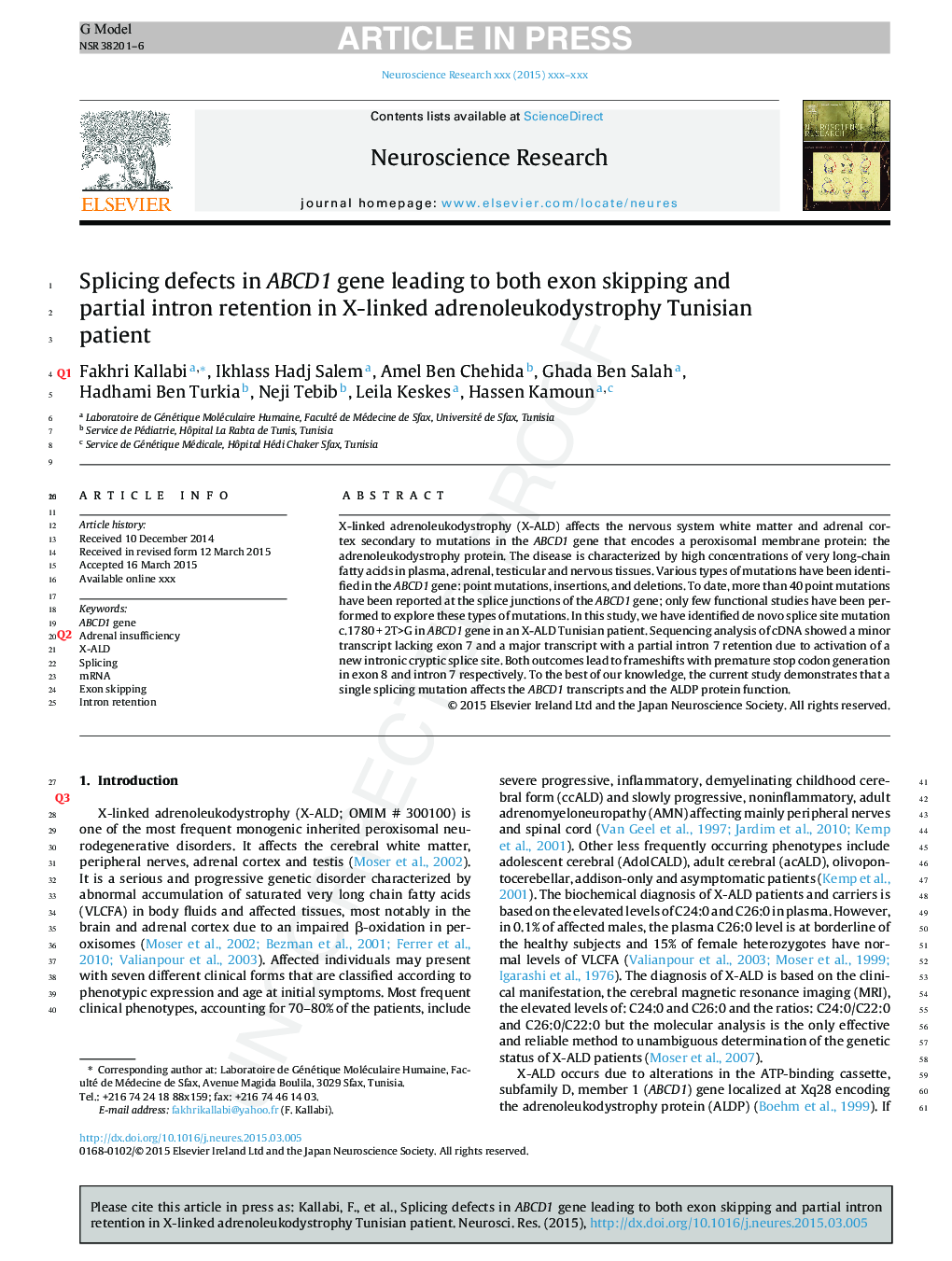| Article ID | Journal | Published Year | Pages | File Type |
|---|---|---|---|---|
| 6286049 | Neuroscience Research | 2015 | 6 Pages |
Abstract
X-linked adrenoleukodystrophy (X-ALD) affects the nervous system white matter and adrenal cortex secondary to mutations in the ABCD1 gene that encodes a peroxisomal membrane protein: the adrenoleukodystrophy protein. The disease is characterized by high concentrations of very long-chain fatty acids in plasma, adrenal, testicular and nervous tissues. Various types of mutations have been identified in the ABCD1 gene: point mutations, insertions, and deletions. To date, more than 40 point mutations have been reported at the splice junctions of the ABCD1 gene; only few functional studies have been performed to explore these types of mutations. In this study, we have identified de novo splice site mutation c.1780Â +Â 2T>G in ABCD1 gene in an X-ALD Tunisian patient. Sequencing analysis of cDNA showed a minor transcript lacking exon 7 and a major transcript with a partial intron 7 retention due to activation of a new intronic cryptic splice site. Both outcomes lead to frameshifts with premature stop codon generation in exon 8 and intron 7 respectively. To the best of our knowledge, the current study demonstrates that a single splicing mutation affects the ABCD1 transcripts and the ALDP protein function.
Related Topics
Life Sciences
Neuroscience
Neuroscience (General)
Authors
Fakhri Kallabi, Ikhlass Hadj Salem, Amel Ben Chehida, Ghada Ben Salah, Hadhami Ben Turkia, Neji Tebib, Leila Keskes, Hassen Kamoun,
